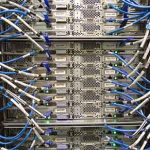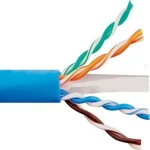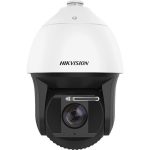As network demands surge with technologies like 8K streaming, artificial intelligence, Internet of Things (IoT), and next-generation wireless like 5G and 6G, planning for future bandwidth is critical to ensure infrastructure can handle escalating data loads. Category 8 (Cat8) Ethernet cables, alongside emerging technologies like fiber optics and speculative future standards, provide robust solutions for high-performance networking. However, strategic planning is essential to balance scalability, cost, and performance. Below, I provide an expanded guide on leveraging Cat8 and beyond to future-proof networks, diving deeper into technical details, use cases, and long-term strategies.
Cat8: Technical Overview
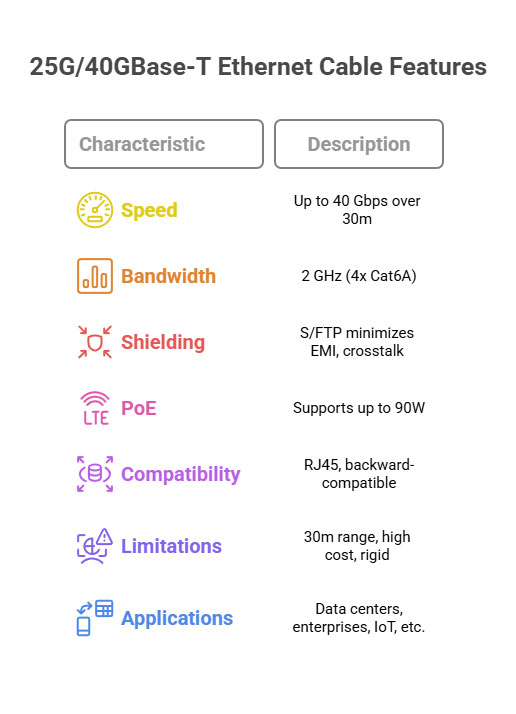
- Speed: Up to 40 Gbps over 30 meters, supporting 25G/40GBase-T Ethernet.
- Bandwidth: 2 GHz (4x Cat6A).
- Shielding: S/FTP construction minimizes EMI and crosstalk.
- PoE: Supports up to 90W for powering devices.
- Compatibility: Uses RJ45 connectors, backward-compatible with Cat5e/Cat6/Cat6A.
- Limitations: 30-meter range, high cost, rigid design.
Applications
- Data Centers: Short-range, high-speed switch-to-switch links.
- Enterprises: AI analytics, 8K video editing, VDI.
- Industrial IoT: Real-time control in factories.
- Residential: Gaming, smart homes.
- Media: Low-latency video feeds.
The Imperative for Future Bandwidth Planning
The digital landscape is evolving rapidly, driven by exponential data growth and diverse applications:
- Data Explosion: Internet traffic is growing at a compound annual rate of approximately 50%, fueled by cloud computing, video streaming, and IoT device proliferation. By 2030, global data creation is projected to exceed 180 zettabytes annually, with applications like augmented reality (AR), virtual reality (VR), and smart cities pushing networks to their limits.
- Diverse Applications: Enterprises require low-latency, high-throughput connections for AI-driven analytics, real-time video conferencing, and industrial automation. Data centers demand ultra-fast interconnects for server-to-server communication. Homes need robust networks for gaming, 8K streaming, and smart home ecosystems.
- Evolving Standards: Emerging technologies like Wi-Fi 7, Wi-Fi 8, 5G, 6G, and 400G/800G Ethernet are raising expectations for wired infrastructure. Cables must support these standards to avoid bottlenecks.
Future-proofing requires anticipating needs 5–15 years ahead, ensuring infrastructure can scale without costly overhauls.
Cat8: Technical Deep Dive and Applications
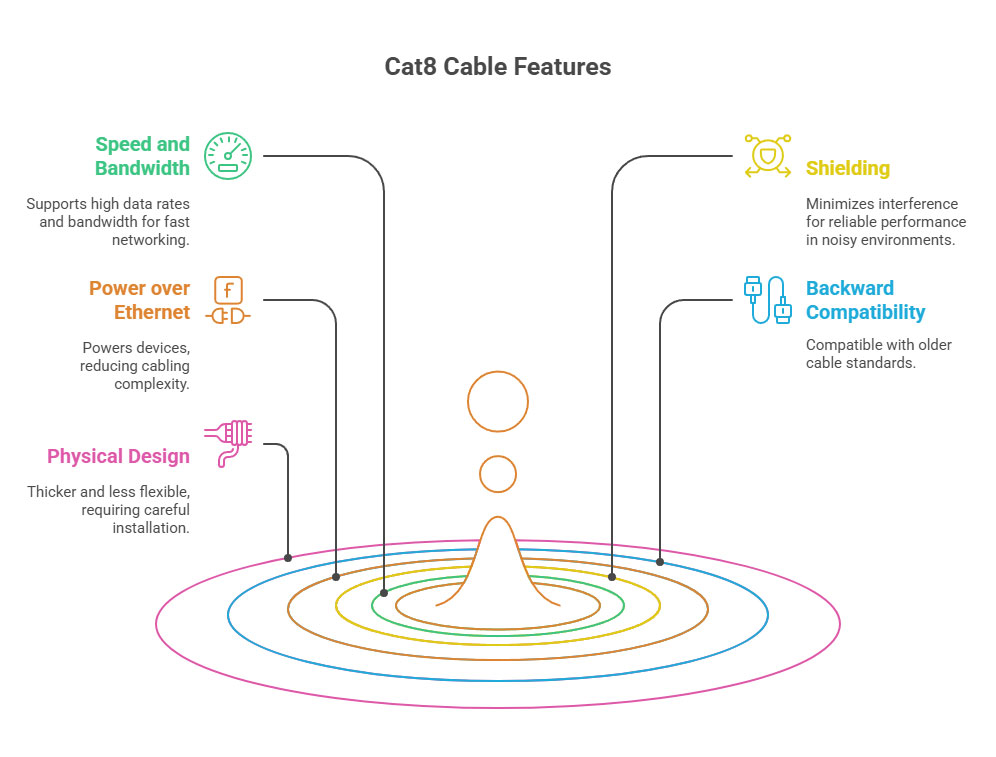
Cat8 represents the pinnacle of copper-based Ethernet cabling, engineered for high-performance environments. Its specifications make it a game-changer for specific use cases:
- Speed and Bandwidth: Cat8 supports data rates up to 40 Gbps over 30 meters (98 feet) with a bandwidth capacity of 2 GHz—four times that of Cat6A (500 MHz). It’s optimized for 25GBase-T and 40GBase-T Ethernet standards, making it ideal for high-speed networking.
- Shielding: Each twisted pair is individually shielded, and the cable is wrapped in an overall shield (S/FTP construction), minimizing crosstalk, electromagnetic interference (EMI), and alien crosstalk. This ensures reliable performance in dense, noisy environments like data centers or industrial settings.
- Power over Ethernet (PoE): Cat8 supports advanced PoE standards (up to 90W, IEEE 802.3bt), enabling it to power devices like IP cameras, wireless access points, and IoT sensors, reducing cabling complexity.
- Backward Compatibility: Cat8 uses standard RJ45 connectors, ensuring compatibility with legacy Cat5e, Cat6, and Cat6A infrastructure, though performance is limited to the lowest-grade component.
- Physical Design: Cat8 cables are thicker and less flexible due to heavy shielding, requiring careful handling during installation. They’re available in stranded or solid-core variants, with solid-core preferred for permanent installations.
Key Applications:
- Data Centers: Cat8 is a cost-effective alternative to fiber optics for short-range, high-speed connections between switches, routers, and servers. Its 40 Gbps capacity supports the growing adoption of 25G/40G Ethernet in hyperscale and enterprise data centers.
- Enterprise Networks: Businesses deploying bandwidth-intensive applications—like AI model training, 4K/8K video editing, or large-scale virtual desktop infrastructure (VDI)—benefit from Cat8’s speed and reliability.
- Industrial IoT: Ruggedized Cat8 cables withstand harsh conditions in smart factories, warehouses, or energy grids, supporting real-time control systems and sensor networks.
- High-End Residential: Enthusiast gamers, content creators, and smart home owners leverage Cat8 for ultra-low latency and high-speed connections, though Cat6A often suffices for most households.
- Broadcast and Media: Studios and live event venues use Cat8 for high-bandwidth video feeds, ensuring minimal latency and jitter.
Limitations:
- Distance Constraint: Cat8’s 30-meter range limits its use to short runs, such as within server racks or small office spaces. Longer distances require fiber or repeaters.
- Cost Premium: Cat8 cables and compatible hardware (e.g., 40G switches) are significantly more expensive than Cat6A or Cat7, making it overkill for many current applications.
- Installation Challenges: The cable’s rigidity and shielding demand precise termination and grounding to avoid signal degradation.
- Niche Demand: Most small businesses and homes don’t yet require 40 Gbps, as Cat6A (10 Gbps up to 100 meters) or even Cat6 (1 Gbps) meets today’s needs.
Beyond Cat8: The Next Frontier
While Cat8 is cutting-edge, future bandwidth demands will necessitate advanced technologies to complement or replace it. Here’s a deeper look at what’s on the horizon:
- Fiber Optics:
- Capabilities: Fiber offers near-infinite bandwidth, immunity to EMI, and support for distances up to tens of kilometers. Single-mode fiber (SMF) is ideal for ultra-long runs and 400G/800G Ethernet, while multi-mode fiber (MMF) balances cost and performance for shorter distances (up to 500 meters).
- Applications: Fiber is the backbone for telecom networks, smart cities, and large-scale data centers. It’s increasingly used in enterprise LANs and even high-end homes for future-proofing.
- Trends: Declining costs for fiber transceivers and installation are driving adoption. By 2030, fiber is expected to dominate new installations, especially in urban areas and for long-haul connectivity.
- Challenges: Fiber requires specialized skills for splicing and termination, and it lacks native PoE support, necessitating hybrid solutions for powered devices.
- Hybrid Fiber-Copper Cables:
- These cables integrate copper for power delivery and fiber for data, offering a best-of-both-worlds solution. They’re gaining traction in 5G/6G base stations, smart grids, and industrial automation, where devices need both high bandwidth and power.
- Example: A hybrid cable might power a 5G small cell while delivering 100 Gbps backhaul over fiber.
- Speculative Cat9/Cat10 Standards:
- While no official standards exist, industry discussions suggest Cat9 or Cat10 could target 100 Gbps or higher over short distances (10–20 meters) by 2030. These would likely use advanced shielding, higher-frequency signaling (e.g., 4 GHz), and possibly new connector designs.
- Applications would focus on data centers and ultra-high-performance computing environments, competing with fiber for short-range interconnects.
- Wireless Technologies (Wi-Fi 8 and 6G):
- Wi-Fi 8: Expected to launch around 2028 (IEEE 802.11bn), Wi-Fi 8 will emphasize ultra-high reliability (UHR), low latency, and enhanced spectrum efficiency. Features like Coordinated Spatial Reuse (Co-SR) and multi-band operation will support dense IoT deployments, VR/AR, and industrial automation.
- 6G: Slated for 2030, 6G will operate in sub-THz bands (100–300 GHz), offering theoretical speeds of 1 Tbps and ultra-low latency (<100 µs). It will enable holographic communications, massive IoT, and AI-driven networks.
- Impact: Wireless backhaul and mesh networks may reduce reliance on wired infrastructure in remote or temporary setups, but high-bandwidth applications will still require robust cabling for reliability.
- Terahertz (THz) Communication:
- Emerging research into THz waves (0.1–10 THz) promises multi-Tbps wireless links for ultra-short ranges (1–10 meters). While still experimental, THz could complement wired infrastructure in data centers or smart factories by 2035.
- AI-Driven Network Optimization:
- AI will play a pivotal role in future networks by dynamically allocating bandwidth, predicting traffic surges, and automating maintenance. Machine learning models can analyze usage patterns to optimize QoS (Quality of Service) and reduce over-provisioning costs.
- Example: An AI-managed network might prioritize bandwidth for a surgeon’s telemedicine session while throttling non-critical IoT updates.
Strategic Planning for Future-Proof Networks
To build a network that withstands future demands, consider these comprehensive strategies:
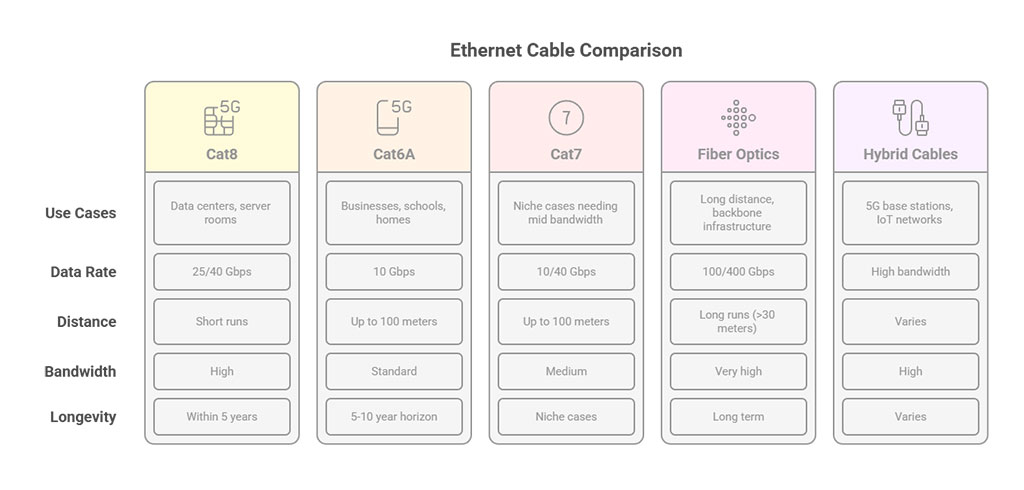
- Detailed Needs Assessment:
- Current Usage: Map out connected devices, peak bandwidth per application (e.g., 8K streaming requires ~50–100 Mbps, AI training may need 10–40 Gbps), and concurrency patterns. For example, a household with 50 IoT devices and 4K streaming may need 1–2 Gbps aggregate bandwidth.
- Growth Projections: Plan for 50–100% annual bandwidth growth in high-demand environments like schools, hospitals, or data centers. Account for emerging applications like holographic displays or autonomous systems.
- Latency Requirements: Applications like gaming, VR, or industrial control systems demand latency below 5 ms, influencing cable and hardware choices.
- Selecting the Right Cabling:
- Cat8: Deploy in high-performance zones like data centers, server rooms, or enterprise LANs where 25G/40G Ethernet is needed now or within 5 years. Ideal for short runs with dense equipment.
- Cat6A: The go-to choice for most businesses, schools, and homes, offering 10 Gbps up to 100 meters. It’s cost-effective for 5–10 year horizons and supports most current applications.
- Cat7: Less common but viable for niche cases, offering 10 Gbps up to 100 meters or 40 Gbps for shorter runs. Its 600 MHz bandwidth is a middle ground between Cat6A and Cat8.
- Fiber Optics: Essential for long-distance runs (>30 meters), backbone infrastructure, or environments targeting 100G/400G Ethernet. Use SMF for telecom or campus networks, MMF for data centers or enterprises.
- Hybrid Cables: Deploy in scenarios requiring both power and high bandwidth, such as 5G base stations, PoE-powered IoT networks, or smart building systems.
- Scalable Network Architecture:
- Modular Hardware: Invest in switches, routers, and patch panels with modular ports (e.g., SFP+ or QSFP for fiber/40G compatibility) to support upgrades without replacing entire systems.
- Over-Provisioning: Design for 20–30% excess capacity to handle unexpected traffic spikes or new applications. For example, a 10 Gbps link might be sized for 12–13 Gbps peak.
- Hierarchical Design: Use a three-tier model (core, distribution, access) in enterprises or data centers to ensure scalability and fault tolerance.
- Physical and Environmental Considerations:
- Cable Types: Choose plenum-rated cables for air-handling spaces (e.g., ceilings) to meet fire codes, or outdoor-rated cables for external runs. Industrial environments may require armored or UV-resistant cables.
- Cable Management: Use structured cabling with labeled patch panels and conduits to simplify upgrades and maintenance. Avoid tight bends or excessive tension, especially with Cat8 or fiber.
- Security: Protect critical infrastructure (e.g., server rooms) with access controls, surveillance, or tamper-evident enclosures to prevent sabotage or theft.
- Cooling and Power: Ensure adequate cooling for high-density Cat8 or fiber installations, as PoE and high-speed equipment generate heat. Use redundant power supplies for uptime.
- Monitoring and Maintenance:
- Deploy network monitoring tools (e.g., SNMP-based systems) to track bandwidth usage, latency, and packet loss in real time. Set alerts for anomalies like congestion or cable faults.
- Schedule annual inspections to check for cable wear, corrosion, or improper grounding, especially in outdoor or industrial settings.
- Use diagnostic tools like cable testers to verify Cat8 signal integrity during and after installation.
- Leveraging AI and Automation:
- Implement AI-driven network management platforms to optimize traffic flow, predict demand, and automate QoS policies. For example, AI can reroute traffic during peak hours to prevent bottlenecks.
- Use predictive maintenance algorithms to identify potential cable or hardware failures before they disrupt service.
- Budgeting and ROI Analysis:
- Cost Breakdown: Cat8 costs $1–$2 per foot, compared to $0.50–$1 for Cat6A and $2–$5 for fiber (excluding transceivers). Installation labor adds $1–$3 per foot for copper, $5–$10 for fiber.
- Long-Term Savings: Higher upfront costs for Cat8 or fiber reduce the need for upgrades over 10–15 years. For example, a $10,000 fiber backbone might save $50,000 in avoided rewiring.
- Phased Approach: For budget constraints, start with Cat6A in access layers and Cat8/fiber in critical areas, then scale up as needs grow.
- Grants and Incentives: Explore government programs for broadband expansion, especially for schools, hospitals, or rural areas, to offset costs.
Challenges and Mitigation Strategies
- Cost vs. Necessity: Cat8 and fiber are expensive, and many environments don’t yet need their capabilities. Mitigate by deploying Cat6A for now and reserving conduit space for future Cat8/fiber upgrades.
- Installation Complexity: Cat8’s shielding requires precise termination and grounding, while fiber demands specialized splicing tools. Hire certified installers and use pre-terminated cables where possible to reduce errors.
- Technology Uncertainty: Rapid advancements (e.g., Wi-Fi 8, 6G) may shift reliance from wired to wireless in some contexts. Hedge by investing in hybrid infrastructure that supports both.
- Regulatory Barriers: Spectrum allocation for 6G and Wi-Fi 8 faces global coordination challenges, potentially delaying wireless alternatives. Focus on wired solutions for guaranteed reliability.
- Digital Divide: Rural or underserved areas may lack access to fiber or high-speed ISPs. Explore hybrid copper-fiber solutions or wireless backhaul (e.g., microwave or satellite) as interim measures.
Adoption Timeline and Trends
- 2025–2028: Cat8 adoption accelerates in data centers, enterprises, and high-end residential settings. Wi-Fi 7 becomes ubiquitous, with Wi-Fi 8 standards taking shape. Fiber expands in urban and campus networks.
- 2028–2030: Wi-Fi 8 certification drives IoT and VR adoption. Early Cat9/Cat10 standards emerge for 100G Ethernet. Fiber becomes the default for new backbone installations.
- 2030–2035: 400G/800G Ethernet and 6G rollouts demand fiber and next-gen copper cables. THz communication enters niche applications. AI-managed networks optimize performance across wired and wireless infrastructure.
Expanded Use Case Scenarios
- Smart Cities: Fiber backbones connect traffic sensors, surveillance cameras, and public Wi-Fi, with Cat8 linking edge devices in control centers. Hybrid cables power 5G/6G small cells while delivering Tbps backhaul.
- Healthcare: Hospitals use Cat8 for real-time imaging (e.g., MRI uploads) and telemedicine, with fiber linking campuses. AI optimizes bandwidth for critical surgeries.
- Education: Schools deploy Cat6A for classrooms and Cat8 for data-heavy labs, with fiber backbones supporting cloud-based learning and AR/VR curricula.
- Gaming and Entertainment: Enthusiast gamers install Cat8 for <1 ms latency in competitive play, while studios use fiber for 8K content distribution.
Cat8 is a powerful choice for high-speed, short-range applications in data centers, enterprises, and niche residential settings, offering 40 Gbps and robust shielding. However, its 30-meter limit and cost make it impractical for widespread use. Cat6A remains the workhorse for most businesses and homes, supporting 10 Gbps over 100 meters at a lower cost. Fiber optics are the ultimate future-proof solution, excelling in long-distance, high-bandwidth scenarios like 400G/800G Ethernet or smart city backbones. Hybrid cables bridge the gap for powered, high-speed applications, while Wi-Fi 8 and 6G will complement wired infrastructure for mobility and IoT. To plan effectively:
- Assess current and projected needs with a 5–15 year horizon.
- Choose cables based on distance, speed, and budget (Cat6A for most, Cat8 for high-performance zones, fiber for backbones).
- Design scalable, modular networks with 20–30% excess capacity.
- Leverage AI for traffic optimization and predictive maintenance.
- Balance upfront costs with long-term savings, using phased upgrades if needed.
By aligning infrastructure with emerging standards and usage trends, you can build a network that’s ready for the data-intensive, low-latency future. If you’d like a detailed bandwidth calculation, cost comparison, or tailored plan for your specific use case (e.g., home, office, or data center), let me know your requirements, and I can create a customized blueprint!

